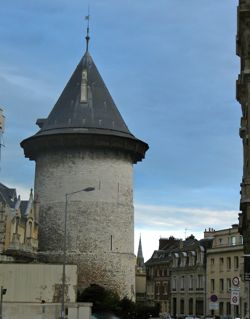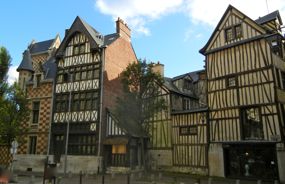 |
Rouen, Normandy, France | |
| The capital of Upper Normandy, Rouen combines history, religion, art, architecture, and cuisine. | ||
|
|
|
Rouen lies on the Seine River, just a couple hours from Paris by car or train. A city with a long history and plenty of medieval architecture, Rouen is also a modern city known for art and culture. As the capital of Upper Normandy, Rouen is an important commercial center. Rouen is notable for its wonderful half-timbered houses that line entire streets and neighborhoods. These medieval structures are a reminder of the city's long history, which goes back to the 900s. One historic event of great significance was the trial and execution of Joan of Arc (Jeanne d'Arc in French) in 1431. At the Place du Vieux Marché you can see the site where she was burned at the stake; near the Seine is a plaque indicating where her ashes were tossed into the Seine. In more recent history, Rouen suffered along with the rest of Normandy in World War II, with bombings damaging the Cathedral and other monuments. Memorials of the war are found throughout the city. Rouen boasts a number of large, ornate, Gothic churches. Its Cathedral was made famous by the paintings of Claude Monet. From Rouen, you can easily take an excursion to the ruined Abbey at Jumièges. You're also only a short drive or train trip from Caen, Honfleur, Bayeux, Mont St-Michel, and the D-Day beaches on the Normandy coast. Eating and drinking are important in Rouen too. Famous among American foodies as the place where cookbook author and TV chef Julia Child was introduced to French cuisine, Rouen offers Norman specialties including local cider (fizzy and lightly alcoholic) and Calvados, or apple brandy.
|
|
Above, half-timbered buildings, Rouen, France.
|


